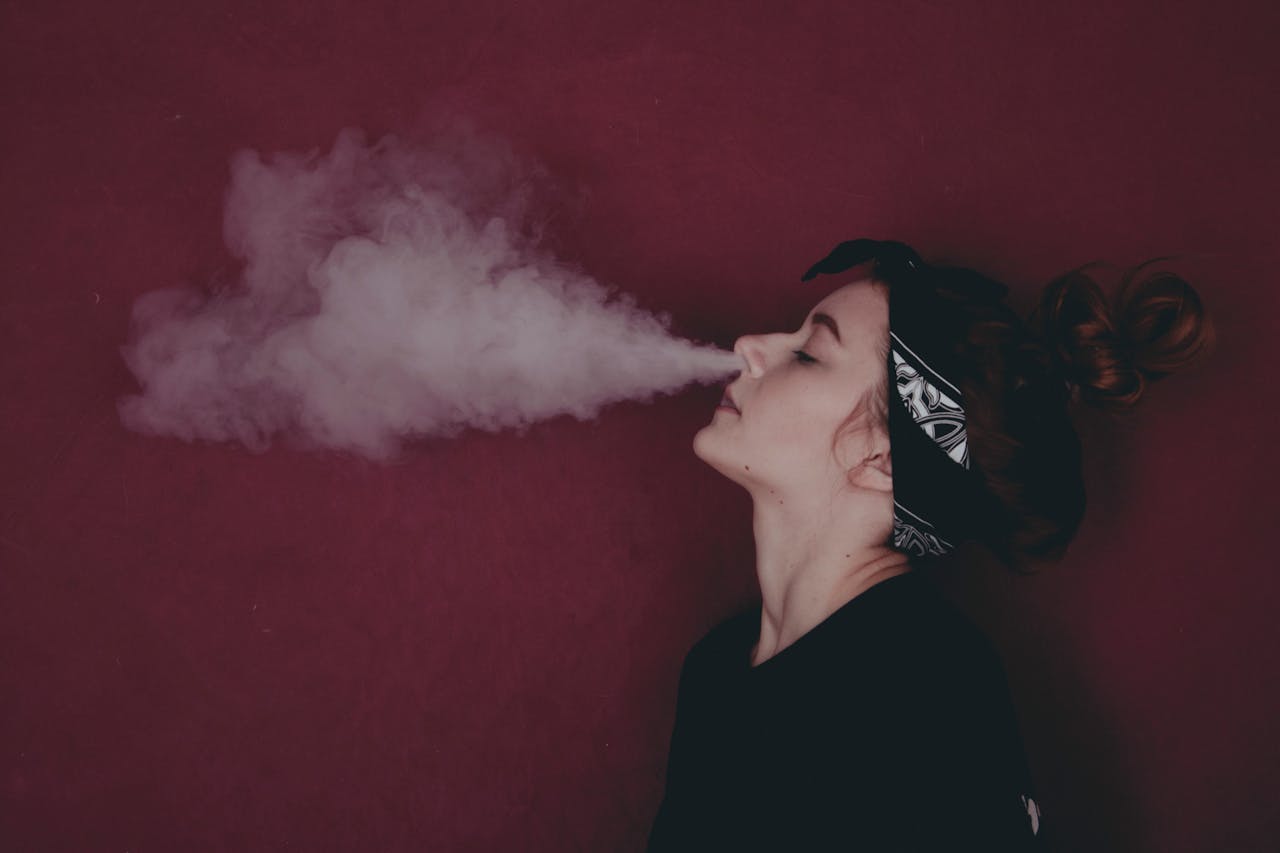Everything You Need to Know About Vape Tank Care: Troubleshooting & The Vape Life Guide

The world of vaping offers a myriad of options, from flavors to devices, making it an exciting alternative to traditional smoking. However, to fully enjoy your vaping experience, proper care and maintenance of your vape tank are essential. In this guide, we will explore common vape tank problems, how to troubleshoot them, and the best practices for cleaning and maintaining your vape device. Whether you are new to vaping or a seasoned vaper, understanding how to take care of your vape tank is crucial for optimal performance and a satisfying vaping experience.
What are Common Vape Tank Problems and How to Troubleshoot Them?
A burnt taste in your vape can be one of the most unpleasant experiences for a vaper. This taste typically occurs when the wick in your atomizer is not adequately saturated with e-liquid, leading to overheating of the coil. To identify this issue, take a moment to analyze your vaping session. If the flavor suddenly shifts from the sweet or fruity notes of your e-liquid to a harsh, burnt flavor, it’s time to take action. Start by checking the e-liquid level in your tank; if it’s low, refill it immediately to ensure your wick has enough vape juice to absorb. Additionally, if you’re using a high wattage that exceeds the recommended settings for your coil, lower the wattage to prevent burning. If the burnt taste persists, it may be time to replace the coil altogether.
Why is my vape not producing vapor?
If your vape is not producing vapor, there could be several reasons behind this issue. First, ensure that your vape device is charged and that the battery is functioning properly. A dead battery will obviously prevent your device from working. Next, check the connection between the tank and the battery. If there’s any residue or dirt, clean the connection points to ensure a solid connection. Another common reason for lack of vapor production is a clogged airflow. Inspect your tank for any blockages in the airflow holes and clean them if necessary. Lastly, ensure that your coil is properly installed and not burnt out. If the coil is old or damaged, it’s time to replace the coil to restore your device’s vapor production.
What to do if my vape tank leaks?
Leaking vape tanks can be frustrating, but they are common issues that can often be resolved with a bit of troubleshooting. Start by checking the seals and o-rings on your tank; if they are damaged or worn out, they may need to be replaced. Additionally, ensure that your tank is tightened properly; a loose connection can lead to leaks. If you’re using a pod system, make sure that the pod is seated correctly in the device. Another reason for leaks could be overfilling your tank. Always leave a little space at the top to allow for the expansion of the e-liquid. If you’ve ruled out all these possibilities and your tank is still leaking, consider switching to a different e-liquid or vape juice with a higher viscosity, as thinner liquids are more prone to leaking.
How to Clean Your Vape Tank for Optimal Performance?
Regularly cleaning your vape tank is essential to ensure optimal performance and a satisfying vaping experience. To clean your vape tank, start by disassembling all the parts, including the tank, coil, and mouthpiece. Rinse the tank and mouthpiece under warm water to remove any leftover e-liquid. For more thorough cleaning, you can use a mixture of warm water and a few drops of mild soap. Soak the components for a few minutes, then scrub with a soft brush or cotton swab to remove stubborn residue. Rinse everything again with warm water to ensure no soap remains. Allow all parts to air dry completely before reassembling your vape tank. Remember to replace the coil if it’s been a while since your last change, as this can greatly affect your vaping experience.
How often should you clean your vape tank?
The frequency with which you should clean your vape tank depends on how often you use it and the type of e-liquids you prefer. If you frequently switch between different flavors or use sweet e-liquids, a regular cleaning schedule of every week or two is advisable. However, if you stick to one flavor and use your vape device less frequently, every three weeks may suffice. Paying attention to the taste and vapor production can also be a good indicator; if you notice a decline in flavor or an off taste, it might be time to clean your tank. Keeping a clean vape tank not only enhances your vaping experience but also prolongs the life of your vaping products.
What materials do you need for cleaning your vape?
Cleaning your vape tank does not require an extensive list of materials. You will need warm water, mild soap, and a soft brush or cotton swabs for scrubbing. Some vapers prefer to use specialized cleaning solutions designed for vape devices, which can be found at local vape shops. Additionally, paper towels or a lint-free cloth will be helpful for drying components after cleaning. Having these items on hand will make the process of cleaning your vape tank efficient and straightforward, ensuring you maintain a high standard of hygiene and performance in your device.
What is the Role of Coils in Your Vaping Experience?
Choosing the right coil for your vape tank is crucial for achieving the desired flavor and vapor production. Coils come in different resistances, which determine how much wattage your device can handle. If you prefer a more intense flavor and vapor, consider a lower resistance coil, which typically operates at higher wattages. Conversely, higher resistance coils are better suited for mouth-to-lung vaping, providing a smoother experience similar to traditional cigarette smoking. Always check the specifications of your vape device and the recommended wattage for the coil you are considering. This will ensure that you choose a coil that not only meets your vaping preferences but also fits perfectly with your device.
How often should I replace my vape coil?
Replacing your vape coil is an essential part of maintaining your device and ensuring a satisfying vaping experience. Generally, you should replace your coil every one to three weeks, depending on your usage and the type of e-liquid you use. If you notice a decline in flavor, a burnt taste, or a decrease in vapor production, these are strong indicators that it’s time to replace the coil. Additionally, if you notice any leaking or gurgling noises, this could also suggest that the coil is worn out and needs to be replaced. Regularly checking and replacing your coil will help maintain the quality of your vape and prolong the life of your device.
What signs indicate that my coil needs replacing?
There are several signs to be aware of that indicate your coil needs replacing. The most noticeable sign is a burnt taste, which occurs when the wick is dried out and unable to absorb e-liquid properly. Other signs include a decrease in vapor production, which suggests that the coil is no longer functioning efficiently. You may also notice gurgling sounds or leaking, which can indicate that the coil is saturated beyond its capacity. If you’ve been using your coil for an extended period, it’s wise to check for discoloration, as a darkened coil can signal that it’s time for a replacement. Keeping an eye out for these indicators will enhance your overall vaping experience.
How Do E-Liquids Affect Your Vape Tank?
The type of e-liquid you choose plays a significant role in your overall vaping experience. For optimal flavor and vapor production, look for high-quality e-liquids with a balanced blend of vegetable glycerin (VG) and propylene glycol (PG). VG is known for its ability to produce dense vapor clouds, while PG is favored for its throat hit and flavor carry. E-liquids with a higher VG content are ideal for sub-ohm vaping, where large vapor production is desired. Conversely, if you prefer a more traditional smoking experience, opt for e-liquids with a higher PG content. Brands that focus on flavor concentration, such as those found in your local vape shop, can provide a satisfying experience tailored to your preferences.
How to choose the right nicotine level for your vape?
Selecting the right nicotine level in your e-liquid is essential for creating a satisfying vaping experience. If you’re transitioning from smoking, consider starting with a nicotine level similar to what you were accustomed to in traditional cigarettes. For instance, smokers of light cigarettes may find that a nicotine concentration of 3mg to 6mg is sufficient, while those who smoke full-flavor cigarettes might prefer 12mg to 18mg. Additionally, if you’re using a pod system designed for mouth-to-lung vaping, higher nicotine levels can provide a more satisfying hit. Experimenting with different nicotine levels will help you find what works best for your vaping journey.
What is the difference between VG and PG in e-liquids?
Understanding the difference between VG and PG in e-liquids is crucial for making informed choices about your vaping experience. VG, or vegetable glycerin, is a thicker liquid that creates a smoother inhale and produces larger vapor clouds. It is often preferred by vapers who enjoy sub-ohm vaping and cloud chasing. On the other hand, PG, or propylene glycol, is a thinner liquid known for its throat hit and ability to carry flavors effectively. A higher PG content in your e-liquid can enhance the flavor profile, making it ideal for mouth-to-lung vapers. Many e-liquids combine both VG and PG, allowing you to enjoy the benefits of both worlds. Understanding these components will help you tailor your e-liquid choices to suit your vaping preferences.
What Essential Tips Should Every Vaper Know?
Maintaining your vape device is essential for prolonging its lifespan and ensuring a satisfying experience. Regular cleaning, as previously discussed, is one of the key factors in maintenance. Additionally, always store your vape device in a cool, dry place to avoid exposure to extreme temperatures and moisture, which can affect performance. Using the recommended wattage for your coil and avoiding dry hits will also help to preserve the integrity of your device. Lastly, keep an eye on your battery health; regularly check for any signs of damage or swelling and replace the batteries when necessary. By following these tips, you can enjoy a longer and more reliable vaping journey.
What are the common issues with vape batteries?
While vape batteries are generally reliable, they can present some common issues that vapers should be aware of. One of the most frequent problems is battery leakage, which can occur if the battery is damaged or improperly stored. Always ensure that your battery is in good condition and check for any visible damage before use. Additionally, battery life can diminish over time; if you notice that your device is not holding a charge as well as it used to, it may be time to replace the battery. Lastly, improper charging can also lead to issues, such as overcharging or using the wrong charger, which can affect battery performance. Following proper battery care and storage practices will help you avoid these common pitfalls.
How to properly charge your vape device?
Properly charging your vape device is crucial for maintaining battery life and ensuring safety. Always use the charger that came with your vape device or a reputable replacement from your local vape shop. Avoid using generic chargers that may not be compatible with your device, as this can lead to performance issues. When charging, it’s best to unplug the device once it reaches full charge to prevent overcharging, which can degrade battery health over time. Additionally, avoid letting your battery completely drain before charging, as this can also affect its lifespan. By following these charging tips, you can ensure the longevity of your vape device and enjoy a consistent vaping experience.


